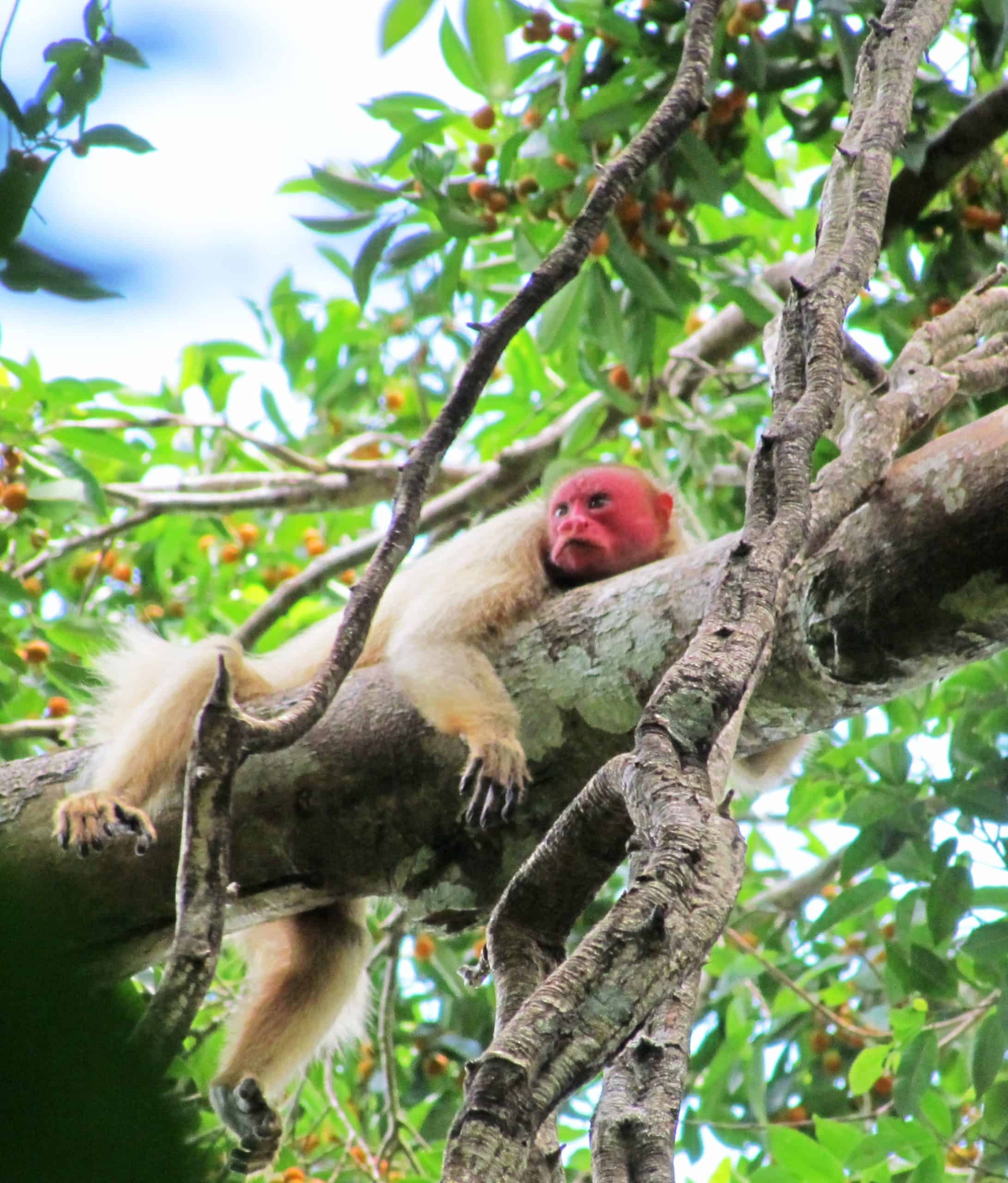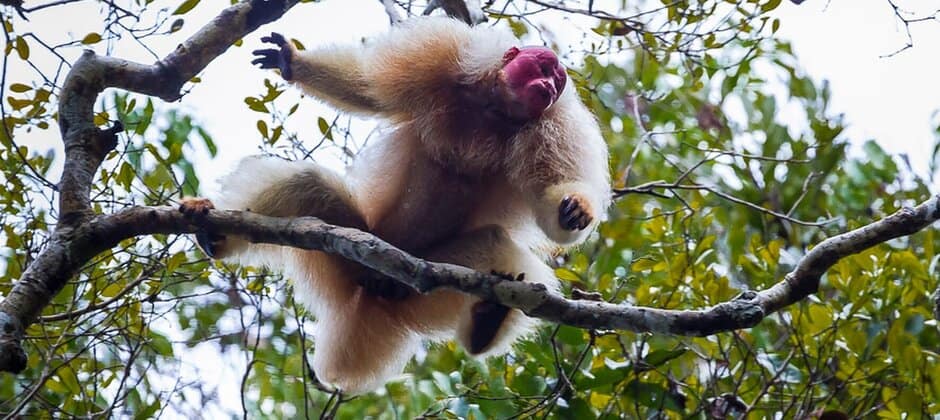Share this article
Can tourists help conserve bald uakaris?
Bald uakaris are unique looking creatures—the monkeys appear to have floating red skulls on a bulldog-sized version of Chewbacca’s body, complete with a short, football-shaped tail. The primates are a site to behold as they flit among the trees in the Amazon, and one community-based tourism ecolodge is hoping these animals can draw more tourist dollars and the conservation that accompanies them.
Researchers at the Mamirauá Reserve for Sustainable Development in Brazil monitored the sighting rates of bald uakaris (Cacajao calvus calvus) for a year. With this information, they could determine when the species is more abundant, so they could potentially attract more tourists to the reserve.
The goal of the project is to draw better attention to lesser known primate species, which in turn could bring in more conservation dollars. Researchers also hope the attention will highlight the importance of Amazonian nature reserves at a time when the Bolsonaro regime is slashing its forests at an unprecedented rate in Brazil.
The researchers found the best time to observe the monkeys may be during the rainy season, according to a study published recently in the International Journal of Primatology. During this time, Mamirauá is typically flooded, but fruit the monkeys eat is more abundant. As a result, the uakaris travel in larger family groups. While tours would have to be conducted by canoe, going out at this time yields better sighting opportunities.
“Bald uakari monkeys are a flagship species for conservation,” said Felipe Ennes Silva, a research fellow at Mamirauá Institute for Sustainable Development in Brazil—a reserve originally created to conserve the primates.

A resting uakari. Credit: Felipe Ennes Silva
Ennes Silva, an author on the study, and his colleagues conducted a survey on uakari sightings by starting in 2018. They asked guides and tourists to report sighting rates for monkeys during tours of the reserve, during both the high and low water seasons. Bald uakaris, listed as vulnerable by the International Union for Conservation of Nature due to habitat loss and hunting, have social patterns that differ depending on the season. When the water is very high and the forest areas become mostly flooded in this area, the primates travel in large groups of 30 to 100 individuals through the tree canopy as they search for figs and other fruit.
But in the low water season, fruit is sparser on the landscape, and the primates split up into smaller groups or venture out alone in an effort to better sustain themselves. The bald uakaris also make less noise on the landscape during the dry season.
Big groups of monkeys were a lot easier for tourists to spot on guided tours. But the wet season also helped in that guided tours were conducted by canoe, a quieter way to travel. That allowed tourists to approach the monkeys without disturbing them as much as they would by walking through the jungle during the dry season.
Overall, 73.4% of tourists reported seeing uakaris during their stay at the Uakari Lodge in Mamirauá. “The main result is that we can implement a primate watching program,” Ennes Silva said.
The discovery is important because it presents a viable way to improve primate conservation for lesser known Amazonian species of primates that need conservation attention and dollars.
“If you are thinking of primate watching or primate tourism, you almost instantly think of great apes or chimps in Africa,” he said, adding that even Brazilians aren’t always well-versed in primate conservation, despite the Amazon being one of the most primate-diverse places on the planet.
Attention and conservation dollars are more important than ever for reserves like Mamirauá in Brazil due to the political situation and habitat loss in the Amazon, he said.
“These days, we are living in tough times because of the government and the increasing rate of deforestation in the Amazon rainforest,” Ennes Silva said.
But better knowledge of optimal uakari watching seasons might help draw in more tourism dollars, and ultimately, attention for a lesser known, vulnerable primate species.
Header Image: Bald uakaris have a unique look. Credit: Marcelo Santana








